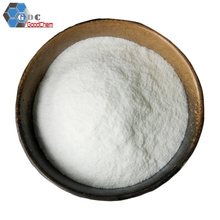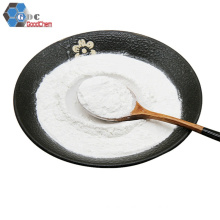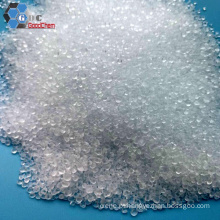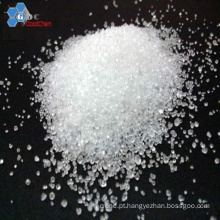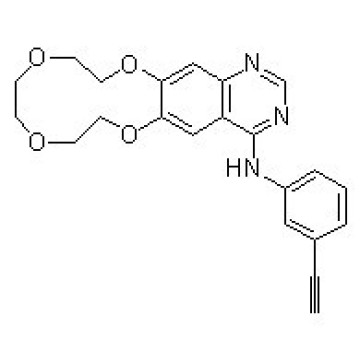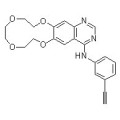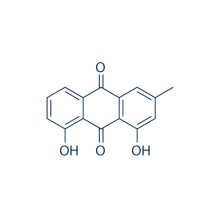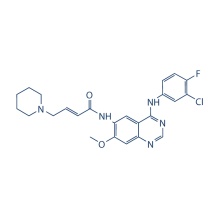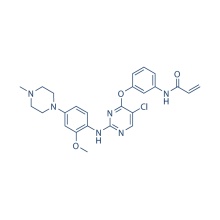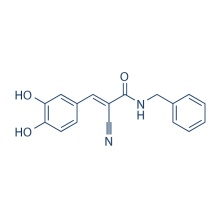.cp_wz table {border-top: 1px solid #ccc; border-left: 1px solid #ccc; } .cp_wz table td {border-right: 1px solid #ccc; borda inferior: 1px sólido #ccc; preenchimento: 5px 0px 0px 5px;} .cp_wz tabela th {border-right: 1px solid #ccc; border-bottom: 1px solid #ccc; preenchimento: 5px 0px 0px 5px;} \ n Peso molecular: \ n 391,42 Icotinib é um inibidor de EGFR potente e específico com IC50 de 5 nM, incluindo EGFR, EGFR (L858R), EGFR (L861Q), EGFR (T790M) e EGFR (T790M, L858R). \ N Atividade biológica Icotinibe inibe a atividade EGFR de uma maneira dependente da dose, com um valor de IC50 de 5 nM e inibição completa em 62,5 nM. O icotinibe inibe seletivamente apenas os membros do EGFR, incluindo o tipo selvagem e mutantes, com eficácias de inibição de 61-99%. Icotinibe bloqueia a fosforilação intracelular de tirosina mediada por EGFR em células A431 de carcinoma epidermóide humano de uma maneira dependente da dose. Enquanto isso, em nosso ensaio de proliferação realizado nas linhas celulares A431, BGC-823, A549, H460, HCT8, KB e Bel-7402, descobrimos que a sensibilidade relativa das linhas celulares ao Icotinibe é A431> BGC-823> A549> H460> KB> HCT8 e Bel-7402. O Icotinibe exibe um amplo espectro de atividade antitumoral e é especialmente eficaz contra tumores que expressam níveis mais elevados de EGFR. Icotinibe mostra um efeito antitumoral em diferentes tipos de xenoenxertos. O icotinibe inibe o crescimento do tumor a uma taxa de 51,5%, 31,0% e 67,4% nos xenoenxertos A431, A549 e H460 com uma dose de 120 mg / kg, respectivamente. Ensaio de cinase de protocolo (apenas para referência): [1]
|
Biochemical kinase assays
|
In the in vitro kinase assays, 2.4 ng/μL EGFR protein is mixed with 32 ng/μL Crk in 25 μL kinase reaction buffer containing 1 μM cold ATP and 1 μCi 32P-γ-ATP. The mix is incubated with Icotinib at 0, 0.5, 2.5, 12.5 or 62.5 nM on ice for 10 min followed by incubation at 30 °C for 20 min. After quenching with SDS sample buffer at 100 °C for 4 min, the protein mix is resolved by electrophoresis in a 10% SDS-PAGE gel. The dried gel is then exposed to the PhosphorImager to detect radioactivity. Quantification is performed by ImageQuant software. In this methodology the radioactive signal inversely correlates with kinase activity.
|
Ensaio de células: [1]
|
Cell lines
|
A431, BGC-823, A549, H460, HCT8, KB and Bel-7402 cells.
|
|
Concentrations
|
~25 μM
|
|
Incubation Time
|
96 h
|
|
Method
|
Cells (103 /well) are seeded into 96-well plates in RPMI-1640 medium containing 10% FBS and grown in a 5% CO2 incubator at 37 °C. After 24 h, cells are treated with Icotinib at 0, 0.78, 1.56, 3.125, 6.25, 12.5 or 25 μM for 96 h. Cell proliferation is calculated by subtracting the mean absorbance value on day 0 from the mean absorbance value on day 4.
|
Estudo Animal: [1]
|
Animal Models
|
A431, A549, H460 and HCT8 xenografts Nude mice
|
|
Formulation
|
0.5% CMC-Na
|
|
Dosages
|
30, 60 and 120 mg/kg/day
|
|
Administration
|
p.o.
|
|
Solubility
|
0.5% CMC,
30 mg/mL
|
|
* Please note that Selleck tests the solubility of all compounds in-house, and the actual solubility may differ slightly from published values. This is normal and is due to slight batch-to-batch variations.
|
Conversão de diferentes modelos de animais com base em BSA (valor com base em dados das diretrizes preliminares da FDA)
|
Species
|
Baboon
|
Dog
|
Monkey
|
Rabbit
|
Guinea pig
|
Rat
|
Hamster
|
Mouse
|
|
Weight (kg)
|
12
|
10
|
3
|
1.8
|
0.4
|
0.15
|
0.08
|
0.02
|
|
Body Surface Area (m2)
|
0.6
|
0.5
|
0.24
|
0.15
|
0.05
|
0.025
|
0.02
|
0.007
|
|
Km factor
|
20
|
20
|
12
|
12
|
8
|
6
|
5
|
3
|
|
Animal A (mg/kg) = Animal B (mg/kg) multiplied by
|
Animal B Km
|
|
Animal A Km
|
Por exemplo, para modificar a dose de resveratrol usada para um camundongo (22,4 mg / kg) para uma dose baseada na BSA para um rato, multiplique 22,4 mg / kg pelo fator Km para um camundongo e, em seguida, divida pelo fator Km para um rato. Este cálculo resulta em uma dose equivalente de rato para o resveratrol de 11,2 mg / kg.
|
Rat dose (mg/kg) = mouse dose (22.4 mg/kg) ×
|
mouse Km(3)
|
= 11.2 mg/kg
|
|
rat Km(6)
|
Informação Química
|
Molecular Weight (MW)
|
391.42
|
|
Formula
|
C22H21N3O4
|
|
CAS No.
|
610798-31-7
|
|
Storage
|
3 years -20℃Powder
|
|
6 months-80℃in solvent (DMSO, water, etc.)
|
|
Synonyms
|
BPI-2009H
|
|
Solubility (25°C) *
|
In vitro
|
DMSO
|
78 mg/mL
(199.27 mM)
|
|
Water
|
<1 mg/mL
(
|
|
Ethanol
|
7 mg/mL
(17.88 mM)
|
|
In vivo
|
0.5% CMC
|
30 mg/mL
|
* <1 mg/ml means slightly soluble or insoluble.
* Please note that Selleck tests the solubility of all compounds in-house, and the actual solubility may differ slightly from published values. This is normal and is due to slight batch-to-batch variations.
|
|
Chemical Name
|
[1,4,7,10]Tetraoxacyclododecino[2,3-g]quinazolin-4-amine, N-(3-ethynylphenyl)-7,8,10,11,13,14-hexahydro-
|
Calculadora de molaridade Calculadora de diluição Calculadora de peso molecular
Grupo de Produto : Proteína Tirosina Quinase > Inibidor EGFR
